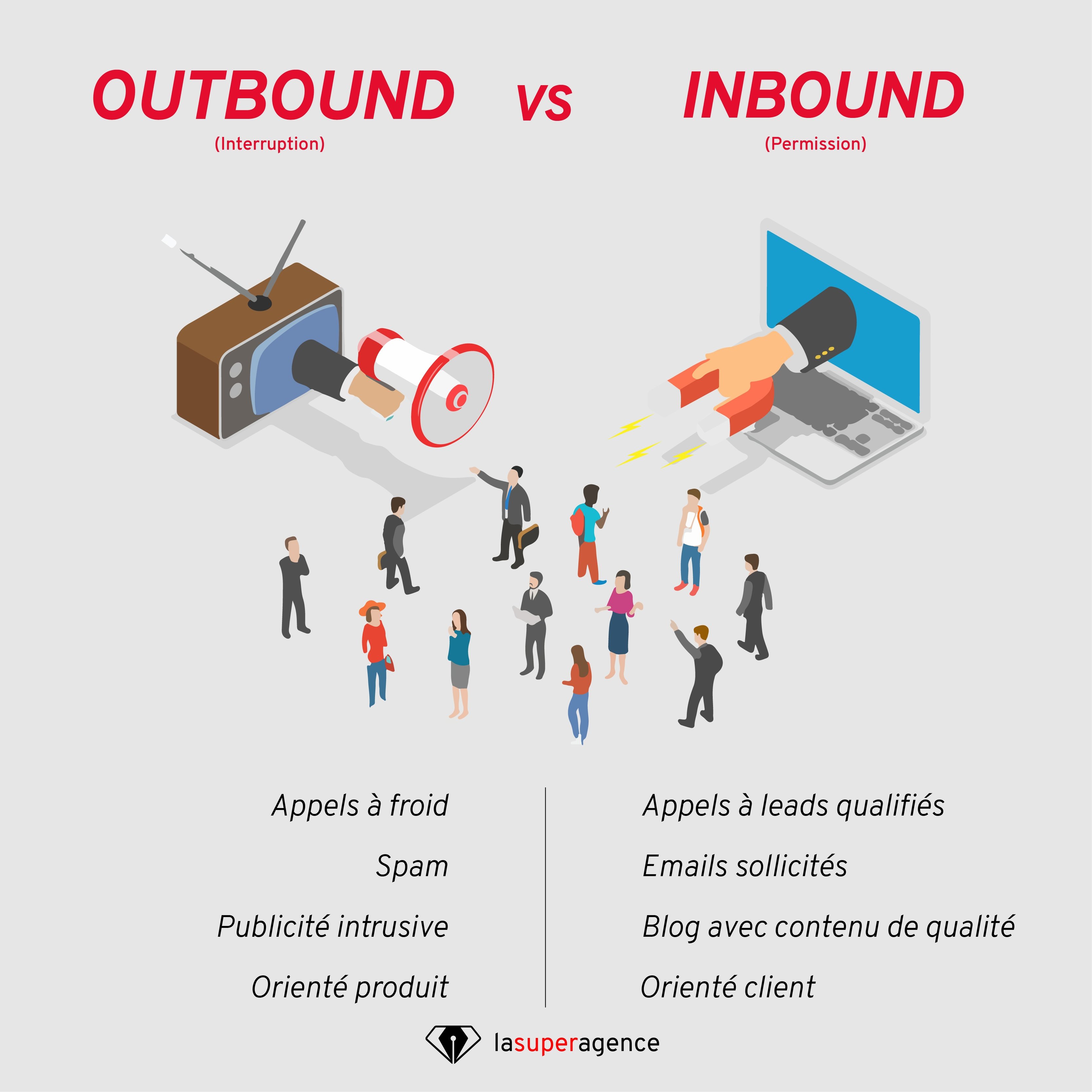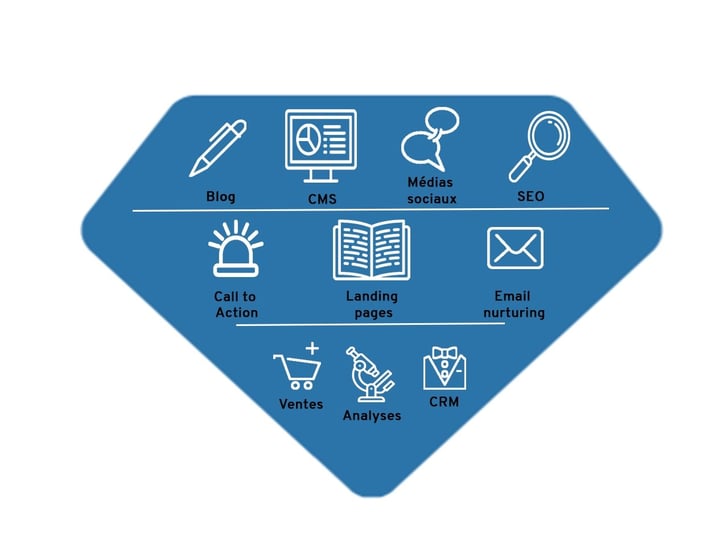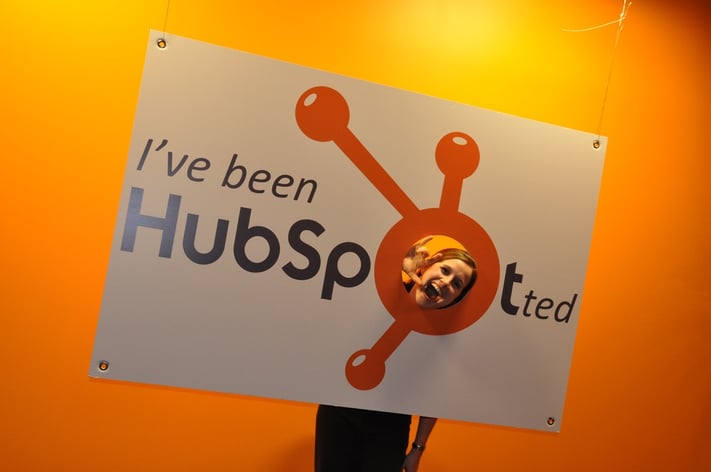Maybe you've noticed that many companies are getting into the business of producing content (texts, blog posts, infographics, videos even movies) that they then blithely relay on social networks?
Their goal is simple: They want to generate more sales. This is called Inbound Marketing !
A disruptive marketing ?

Inbound Marketing? A brilliant way to win minds!
With the advent of the web, consumers' decision processes have changed dramatically.
People are retrieving a huge volume of information before they make contact with a company's representatives or salespeople.
Consequence : Marketing must adapt to this reality.
In traditional or Outbound marketing, the company pushes its message to its audience to get a transaction.
It may be a promotion such as a discount or special offer, which will be delivered by interrupting the content the customer was viewing (TV program, radio or web video). This is known as interruption marketing.
The Inbound Marketing approach is the reverse : The company offers content to consumers according to the interests of the consumer.

Where Outbound Marketing uses interruption, Inbound Marketing is based on permission.
It aims to gain their attention by offering an interesting informational offer, consistent with their needs and without it being pure promotion.
For example, a company that sells sporting goods publishes a article on " 8 good reasons to exercise before spring ".
At the end of the article, the reader will be able to acquire a free guide on fitness with exercises or dietary advice. To get it he will however have to leave some information (name, first name, email). He will then be a prospect (or lead) to pamper !
The approach is much more focused and most importantly does not interrupt the prospect. This is known as permission marketing.
Another advantage of Inbound Marketing : The average cost of customer acquisition is much lower than with traditional methods.
For one thing, producing text, images and even video often costs less than buying ad space, but more importantly, the effects of this content will endure thanks to the long tail.
Inbound marketing therefore marks a real break with the classic marketing approach, in that it makes maximum use of the power of social networks and search engines.
Becoming your own media to better convert
With Inbound Marketing, the brand becomes content producer.
The brand is no longer positioned as just a seller, but also as an expert on its business.
This strategy brings naturally the consumer to the purchase thanks in part to the automation of defined tasks within a workflow.
Based on the information gathered about the visitor behavior (links clicked, videos viewed, favorite topics, etc.), marketing decides to send relevant content in context. 
This is through attraction, conversion and analytics tools makes sense.
To carry out these operations, it is necessary to have adapted tools.
For each stage of an Inbound Marketing campaign, there are specialized solutions.
For example, email and newsletter sends can be done with Mailchimp or landings pages can be designed on unbounce.com. But this poses a problem for tracking leads between these different platforms.
How do you know, for example, if a web user who likes one of your posts on Facebook is already a customer of yours ?
The solution is called Hubspot, a company that is, by the way, at the origin of the concept of Inbound Marketing itself.
Hubspot allows you to link all the tools involved in Inbound Marketing. It's both a platform to manage its social networks, landing pages, forms, calls-to-action, blog posts or even data used for traffic analysis.
With Hubspot, it is possible for a company to plan, in great detail and with great relevance, its marketing campaigns and its connection with its visitors.

HubSpot, a complete solution optimized for Inbound!
Whether using disjointed elements or an integrated solution, Inbound Marketing is a brilliant approach because it's relatively simple to implement even if it sometimes requires the help of a specialized agency.
What keeps it (but for how long?) from completely replacing the traditional digital marketing approach is mostly related to the difficulty of changing habits. In the United States, companies now spend 35 % of their marketing budget on Inbound Marketing.
In France, this figure is only 2 %. What are you waiting for to launch ?









